Restored by a few days in the Umbrian countryside, we were ready for new adventures. We boarded a north bound train in Orvieto headed to Italy’s Emilia-Romagna region, known as the gastronomic heart of Italy. Just our kind of place! It’s in this region one finds Parmigiano Reggiano cheese, Prosciutto di Parma, Balsamico di Modena, mortadella, and pastas such as tortellini and tagliatelle, and lasagne Bolognese. We’d been in Emilia-Romagna’s capital city of Bologna for less than 24 hours when we fell in love . . . again. What a wonderful city!
THREE TIMES A LADY
You get a small sense of Bologna’s charm by first understanding her three nicknames: La Rosa (The Red One), La Dotta (The Learned One), and La Grassa (The Fat One). Red is a recurring color in Bologna’s architecture and also refers to the leftist politics of the city. La Dotta refers to the University of Bologna, the oldest university in the western world, founded in 1088 and considered one of the best in Europe. The 90,000 students make up about one third of the city’s population which gives the place a youthful vibe that is intoxicating, particularly for us old folks. The reference to La Grassa requires no explanation given the long list of amazing foods that the Bolognese enjoy. Spoiler alert – there’s a walking food tour coming up.
A UNIQUE REAL ESTATE STRATEGY
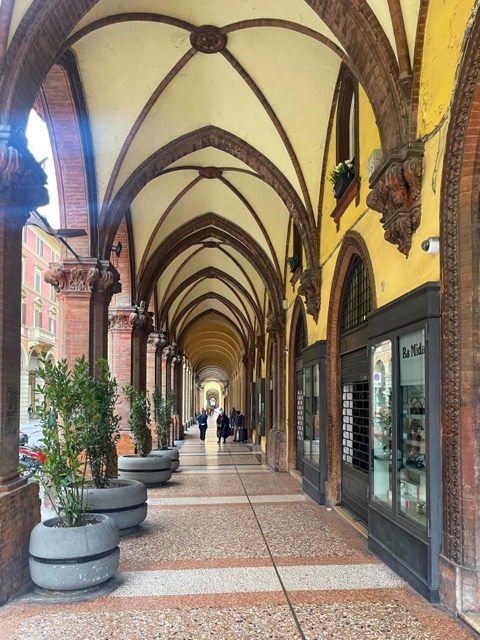
Another of her charms is also a defining feature of the city’s architecture: porticos. Over 24 miles of covered walkways stretch across the city, each with its own character including elegant columns, frescoes, weathered stone, and intricate marble and terrazzo floors. Walking under these gracefully arching structures that date back to the medieval era is absolutely enchanting and provides a sense of continuity with the city’s past. It’s an opportunity to slow down, savor the moment and be immersed in the architectural elegance of this utterly beguiling city. This unique feature seems to have originated with a city planning requirement hundreds of years ago that demanded broad walkways in front of all buildings in the city center. The real estate developers of the era devised these elegant porticos as a way to comply with the regulation while also allowing them to build above the required walkways to the full limits of the lot lines. They thus maximized their profit while providing an incalculable benefit to the city and its future. Bravo!
THE QUADRILATERO
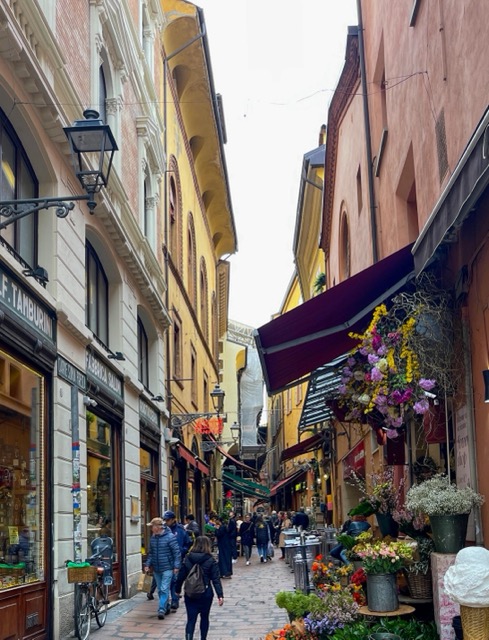
A historic food market in the heart of Bologna, the Quadrilatero, is known for its narrow streets and bustling atmosphere, filled with local vendors selling a wide variety of fresh produce, meats, cheeses, pastas, and other culinary delights. The market is a vibrant hub of activity, drawing locals and tourists alike. This is also where we started our walking food tour. Our first stop turned out to be the highlight – a small sandwich sort of deliciousness – tigelle bread filled with lardo (pork fat) and a sprinkling of pecorino cheese. The bread is the thickness of a fat cracker with the texture of a tender waffle about size of a drink coaster. The bit of meat, cheese, or lardo filling is just the right balance of flavors to be totally habit forming. We went back to the same shop for a tigelle breakfast twice more including a quick dash before our final train ride out of town.
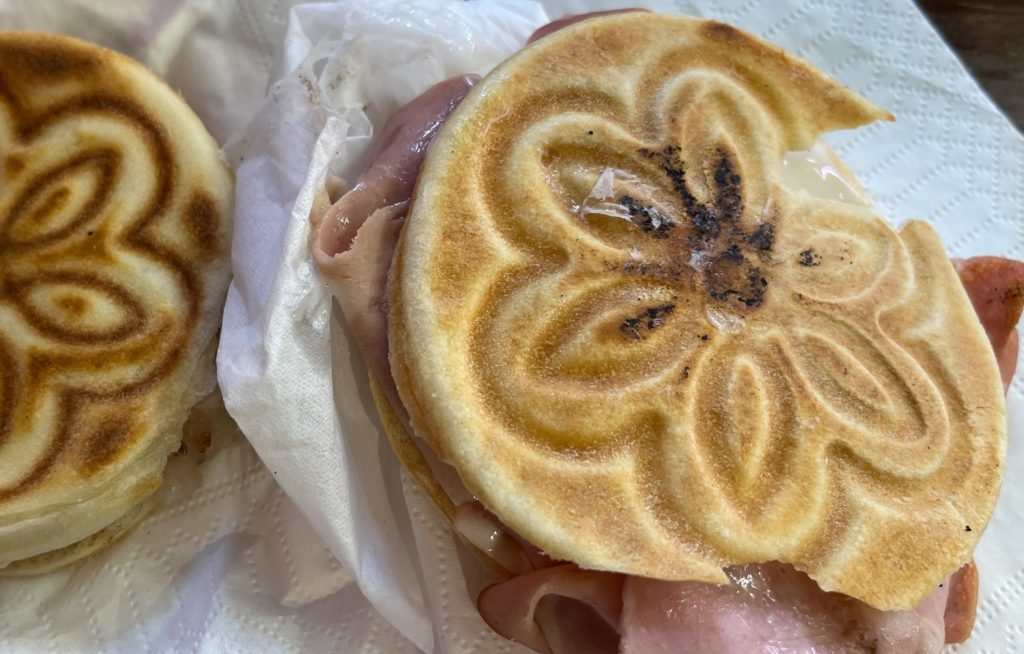
As we strolled through the Quadrilatero market, our guide picked up a few things – mortadella, soft cheese, salami, and bread. After an hour so so, we stopped at Osteria del Sole, a traditional wine bar that has been serving in the same space since the 15th century. It’s a strictly BYOF venue. That is, to enter the establishment every customer is required to have a glass of wine and you are encouraged to bring your own food. For a proper lunch, our guide led us to a small trattoria for a traditional Bolognese meal of tortellini in brodo (broth) and tagliatelle el Ragú. Of course, we finished the tour with gelato.
CHEESE HEAVEN
A 45 minute train ride the next morning took us to the nearby town of Parma, where we drove through the countryside to a Parmigiano Reggiano cheese factory. There are about 300 of these “caseifici” in the Parma area, most of them small, family run operations. We stopped at one of these factories that offered a chance to observe the cheese making process. We watched the milk, fresh from the cows that morning, being heated in copper cauldrons. After the addition of rennet, the resulting curds are separated from the whey and the cheese placed into molds to form its characteristic wheel shape. After resting for 24 hours, the cheese wheels are submerged in brine baths before being transferred to aging rooms, where they will mature for a minimum of 12 months (and often much longer) under controlled conditions.
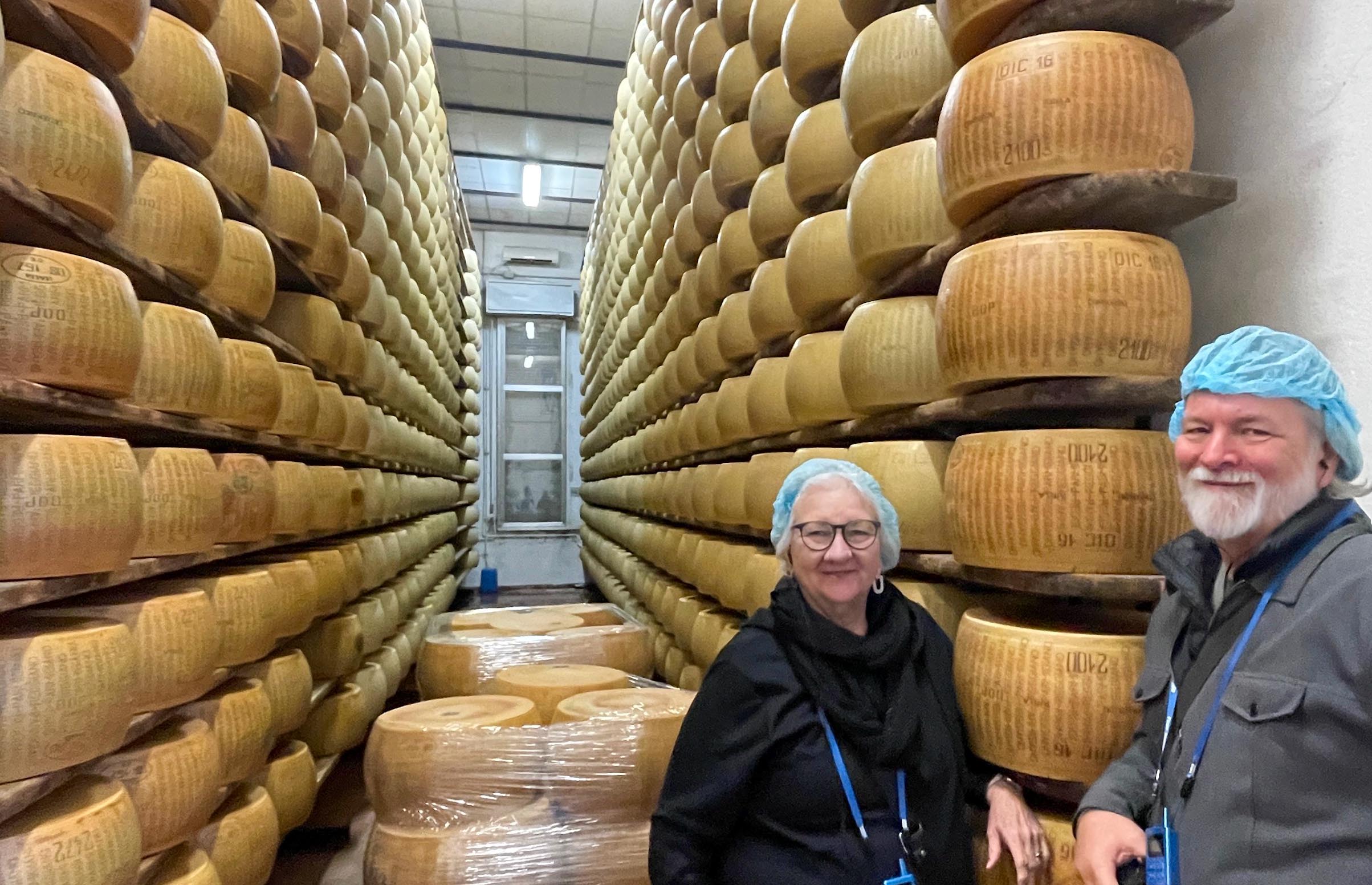
There are strict regulations governing the production of Parmigiano Reggiano that dictate everything from the breed of cow used for milk, the type of hay and grass they are fed, and the ingredients allowed in the cheese. At the end of the tour, we taste different ages of Parmigiano Reggiano ranging from 12 to 36 months and sometimes even longer. It was wonderful to sample the subtle differences in flavor and texture that develop over time in this iconic cheese.
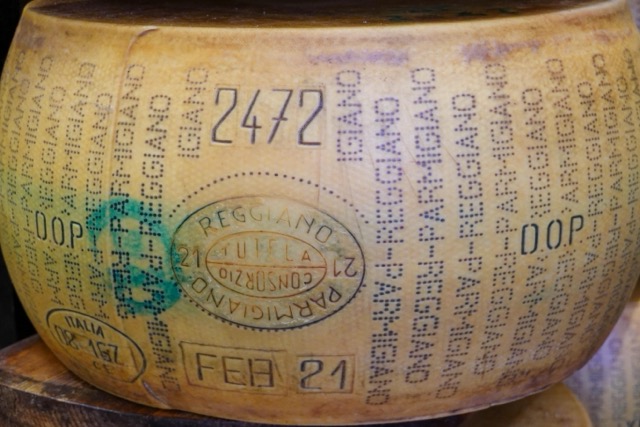
HOG HEAVEN
Next, we visited a “prosciuttifici,” to learn about the process of transforming raw pork legs into the delicate, savory delicacy known as prosciutto. The selection of high-quality pork legs is the first step. Then, the legs are massaged, trimmed and salted to draw out moisture and enhance flavor. Next, the legs undergo a resting period before being rinsed and left to air-dry in specialized curing rooms. Over many months (or even years, depending on the desired flavor profile), the prosciutto slowly matures, developing its distinctive texture and flavor. Of course, no visit to a prosciutto factory would be complete without a tasting session washed down with a glass or two of Lambrusco.

PROGRESSIVE POLITICS – 6TH CENTURY STYLE
Another day trip from Bologna started with a short train ride to the seaside (Adriatic Sea) town of Ravenna. In preparation, we brushed up a bit on the history of the late Roman and Byzantine empires – particularly the era of Justinian and his wife Theodora. The particular relevance of this history to Ravenna is preserved in the stunning collection of mosaics adorning the churches built by this 6th century power couple.
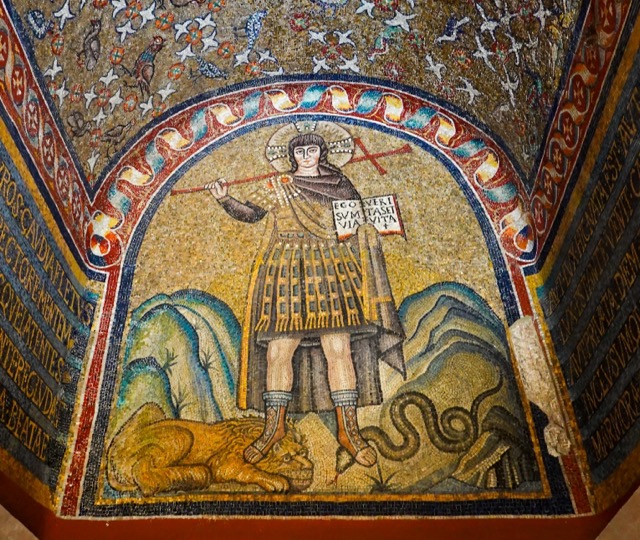
The buildings and their mosaics were created to celebrate the reconquest by Justinian of Roman territory that had been lost to the invading northern tribes in an ill-fated attempt to return the empire to it’s glory. The mosaics are a mix of imperial projections of power with Christian symbolism and scenes from the Bible. The vibrant colors, intricate designs, and meticulous craftsmanship left us awestruck. My personal favorite is of Empress Theodora and her court. This powerful woman promoted the rights of women and forced changes in the legal code protecting women’s rights that are still referenced today for their progressive and enlightened view. Justinian outlived Theodora by 17 years and historians of the era recorded that he mourned her loss everyday until his own death in 565.
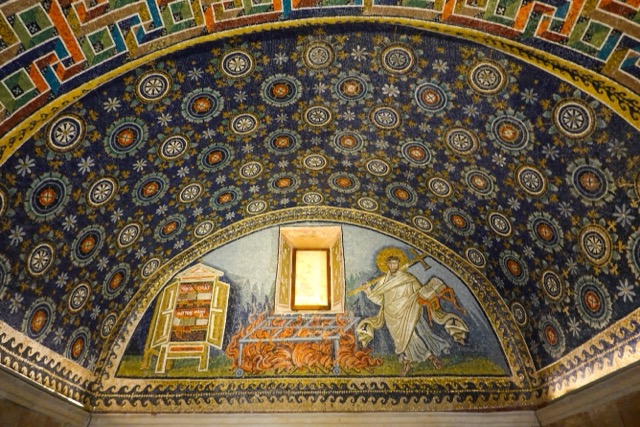
THE PINK QUEEN
We cannot leave Bolongna without one last food theme. As a child, a bologna and cheese sandwich was without a doubt one of Ed’s favorite things. Of course, as children we had no real understanding of the roots of this ubiquitous sandwich meat. Even as adults we’ve had only a cursory understanding of the wonders of Italian sausage traditions. As with so many of the foods we grew up with, it takes a visit to the source to realize what that stuff in the Oscar-Meyer plastic was vaguely hinting at. Mortadella is referred to in Bologna as “the pink queen” and it is a revelation. Across the city you will find salumeria selling mortadella as everything from tidy four inch cylinders to mammoth rolls twelve inches and larger. Shaved in thin slices it is almost translucent with lovely white nuggets of flavorful lard. As fate would have it, one of the best mortadella laboratoria (a sandwich shop selling nothing but mortadella) was located next door to our hotel. Ed’s new favorite sandwich involves a mountain of shaved mortadella dressed with a generous dollop of pistachio cream. Perfetto!
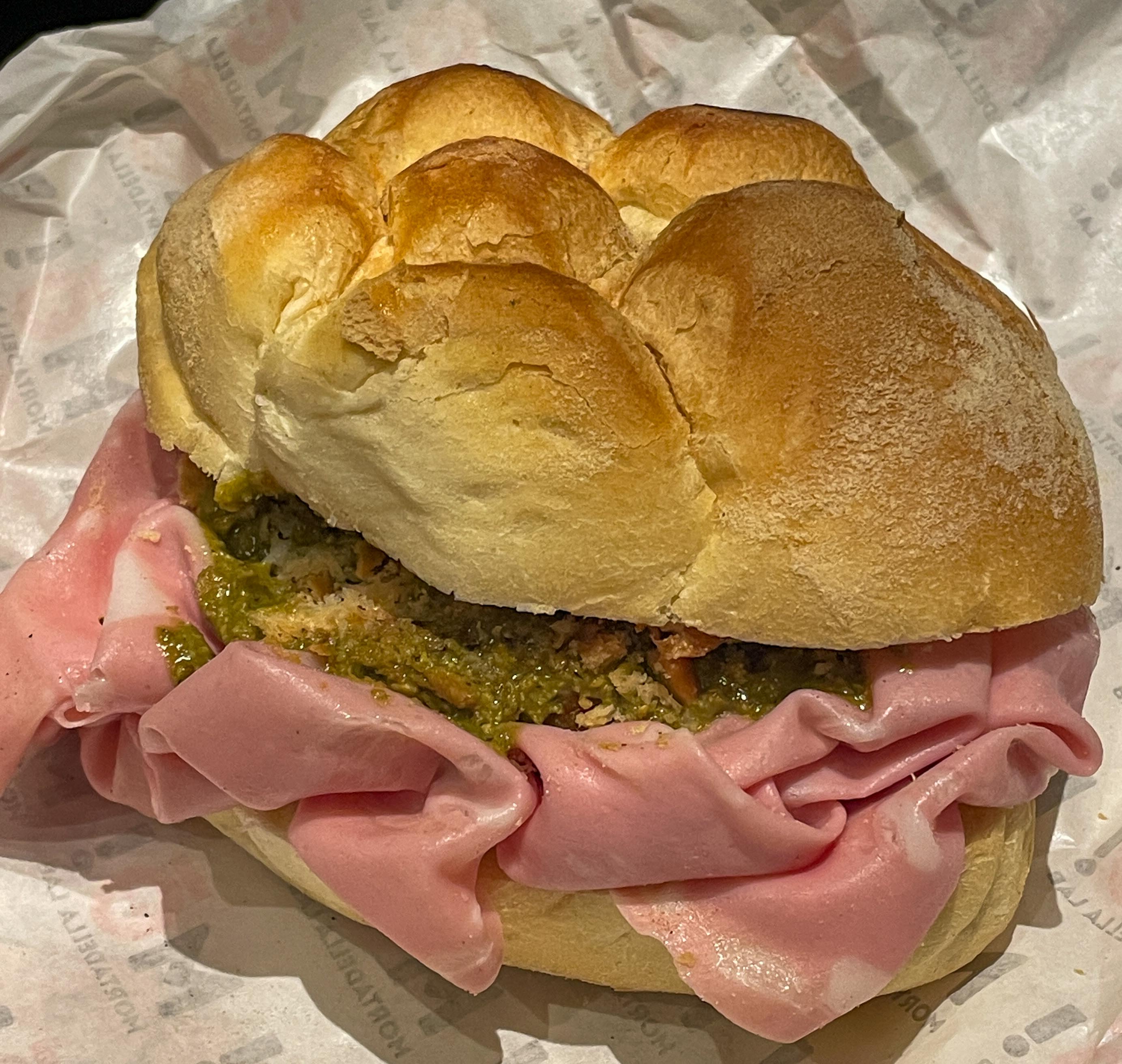
We had five days in Emilia Romagna and felt sad to leave. As we headed down the porticoes toward the Bologna Centrale train station, we turned to each other and agreed, “we could live here.” Maybe, someday . . .
Next Stop: Venice.
About Us
Welcome to our little corner of the world where we invite you to embark on exciting journeys with us!
We’re Ed and Bonnie, a duo passionate about exploring the world and experiencing its wonders. Our love for travel isn’t just about discovering new places; it’s about sharing those moments with cherished family and friends like you.
Our hope is that you will feel like you’re right there with us, sharing in the excitement and wonder of each destination. Better yet, let’s plan a rendezvous somewhere wonderful! Learn more

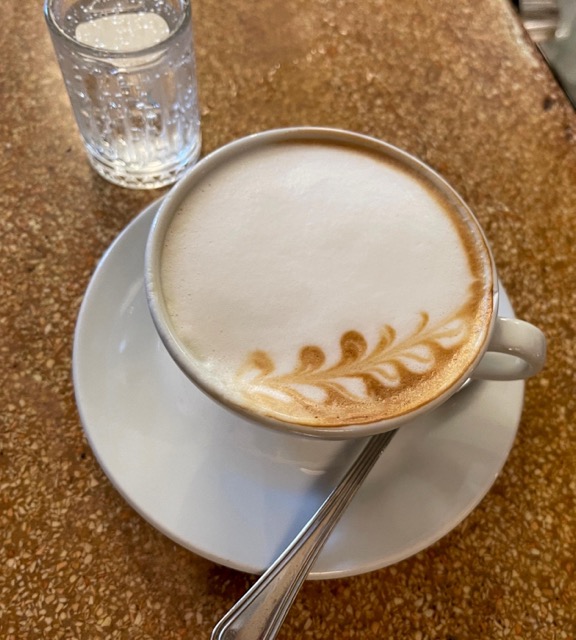
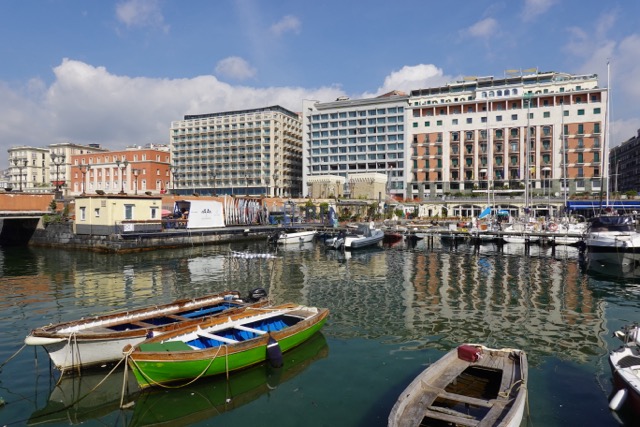
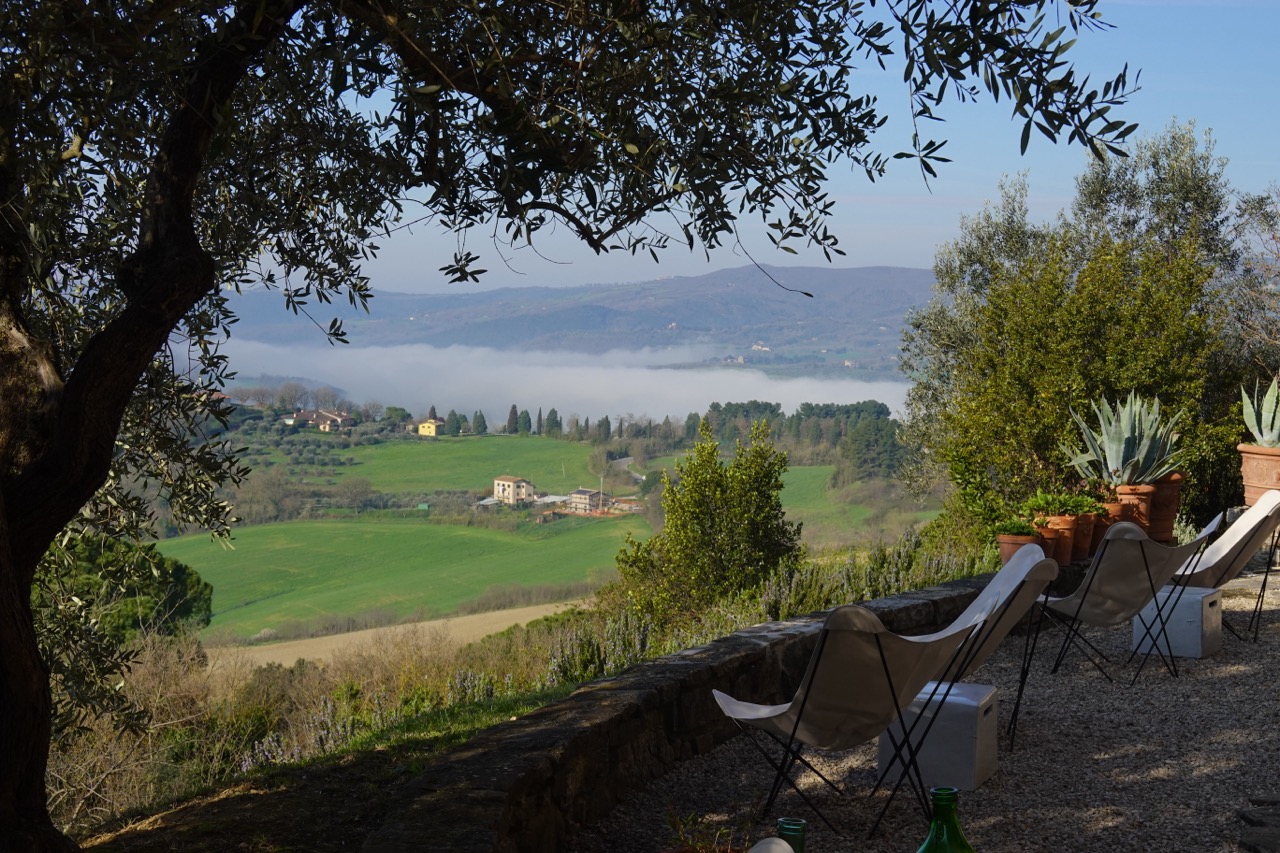
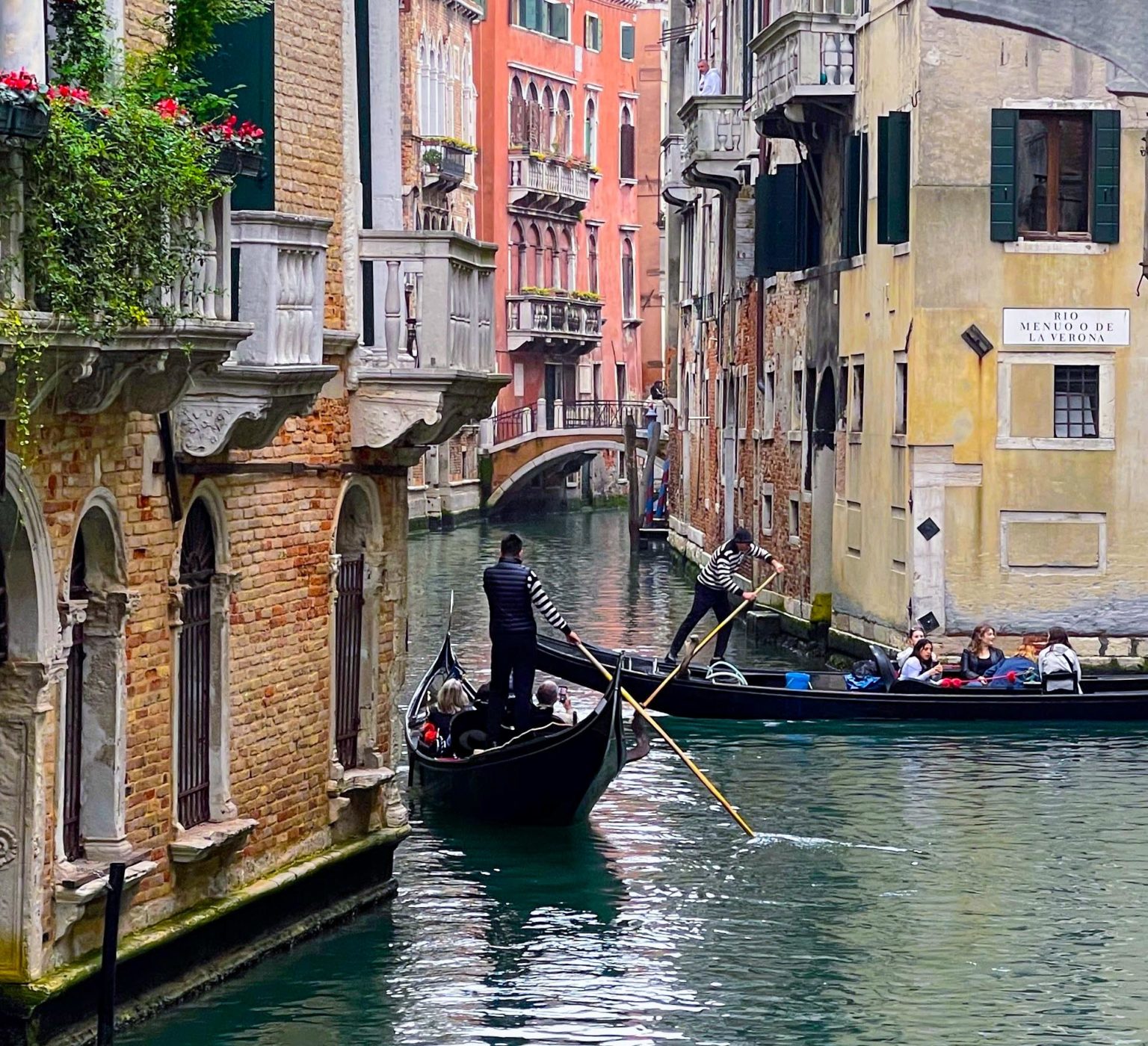
How stunning. Those breakfast sandwiches…oh man.
Bologna is indeed fascinating a foodie paradiso! May former Gunn HS colleague, Jim Shelby, lives there with Lorenza, a Bolognese food critic, and their 16 year old daughter, Sara. They left Palo Alto after Jim retired from teaching Drama (Brilliant!) . and now lived full time in Bologna! ( Sara plans to attend college in Firenze or Roma! ) I regret that I did not hook you up with them, but sounds like you made the Very Most of your time there, replete withgreat food and wine! Love the Cheese factory photo!
Venice will be a startling contrast and stunning it its setting and architecture/art. And the Seafood! VIVA!! Jo. (and Nayan)
Also, thanks for the wonderful mosaic photos from Ravenna, one our favorite places in that area. We, too, were Stunned by their beauty! We drove from there to Venezia and stayed in a wonderful pension, the one Kate Hepburn inhabited in one of our All Time favorite films: SUMMERTIME (co staring Rossano Brassi)) Plan to get lost in the back alleyways away from the madding crowd. Love the wooden stature of St John near the cathedral in the Main Square. Had delicious Scampi there, serenaded. Jo
Also, thanks for the wonderful mosaic photos from Ravenna, one our favorite places in that area. We, too, were Stunned by their beauty! We drove from there to Venezia and stayed in a wonderful pension, the one Kate Hepburn inhabited in one of our All Time favorite films: SUMMERTIME (co staring Rossano Brassi)) Plan to get lost in the back alleyways away from the madding crowd. Love the wooden stature of St John near the cathedral in the Main Square. Had delicious Scampi there, serenaded. Jo